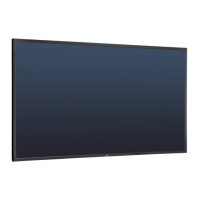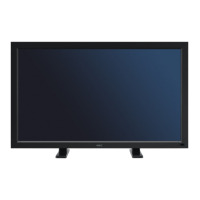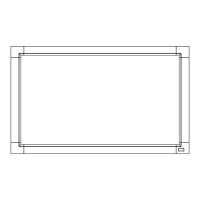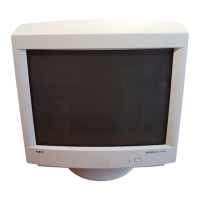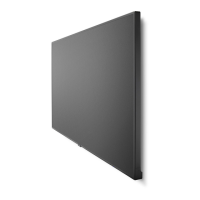English-18
Connecting a USB device
USB1: USB downstream port (Type-A).
Connect a USB compatible flash memory or keyboard to Down Stream Port.
USB2: USB upstream port (Type-B).
Connect to a USB compatible computer with a USB cable.
A USB compatible computer connected to USB2 can control the devices connected to USB1.
USB CM1 (2A): Power supply port.
Please refer to the specifications page for power supply information (see page 65, page 66, page 67, page 68, page 69
and page 70).
USB CM2: Service port.
Please do not connect devices.
USB MP: USB downstream port (Type-A).
To use the Media Player function, please use this port.
•Pleasemakesuretheconnectorshapeandorientationis correctly aligned when connecting the USB device or cable.
•DependingontheuseofcomputerBIOS,OSordevice,theUSBfunctionmaynotbeworking.Inthiscase,pleasecheck
user’s manual of your computer or device, or contact your supplier for detailed information.
•BeforeturningoffthemainpowerswitchofthemonitororshuttingdownWindows
®
, please turn off the USB function and
remove the USB cable from the monitor. You may lose data when the computer crashes.
•ItmaytakeafewsecondsuntilthemonitorrecognizestheUSBinput.DonotdisconnecttheUSBcableordisconnect and
reconnect the USB cable before the monitor recognizes the input.
•You can set power supply for USB CM1 (2A) at USB POWER in the OSD menu (see page 43).
•When you use the USB CM1 (2A) port for power supply, please use a USB cable that supports 2A.
•Please refer to the USB in the OSD menu (See page 43) for the USB setting.
NOTE: USB CM1 (2A) and USB CM2 are not corresponding port.
Please refer to the connection (See page 16) to connect USB devices to the monitor.
CAUTION: Do not bind the USB cable. It may trap heat and start a fire.

